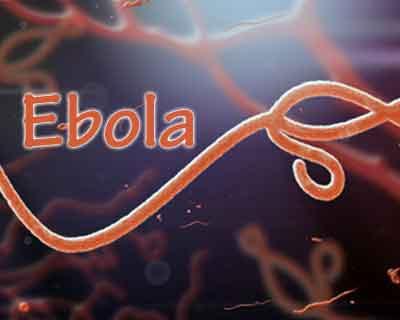- Home
- Editorial
- News
- Practice Guidelines
- Anesthesiology Guidelines
- Cancer Guidelines
- Cardiac Sciences Guidelines
- Critical Care Guidelines
- Dentistry Guidelines
- Dermatology Guidelines
- Diabetes and Endo Guidelines
- Diagnostics Guidelines
- ENT Guidelines
- Featured Practice Guidelines
- Gastroenterology Guidelines
- Geriatrics Guidelines
- Medicine Guidelines
- Nephrology Guidelines
- Neurosciences Guidelines
- Obs and Gynae Guidelines
- Ophthalmology Guidelines
- Orthopaedics Guidelines
- Paediatrics Guidelines
- Psychiatry Guidelines
- Pulmonology Guidelines
- Radiology Guidelines
- Surgery Guidelines
- Urology Guidelines
Ebola Spread in Tail End of Epidemic Through Sex, Breast Milk

Some of the final cases of Ebola in Sierra Leone were transmitted via unconventional routes, such as semen and breast milk, shows an analysis of the tail-end of the epidemic.
With 14,124 cases and 3,956 deaths to date, Sierra Leone was the most widely affected of the three West African countries worst hit by the Ebola epidemic that started in 2014.
By mid-2015 cases in the three most-affected countries had declined, but isolated cases of the disease continued to appear, even though all known transmission chains were thought to have been extinguished.
In this study, the international team of researchers produced a detailed picture of the latter stages of the outbreak in Sierra Leone, using real-time sequencing of Ebola virus genomes carried out in a temporary laboratory in the country.
"To be able to rapidly identify the source of new cases we need to sequence samples and release data in real-time, share samples and share data as it is produced," explained senior study author Ian Goodfellow from University of Cambridge
While the study did not suggest that unconventional transmission was more common than previously thought, the authors describe several instances including a mother who may have transmitted Ebola to her baby via breastfeeding, and an Ebola survivor who passed on the virus sexually a month after being released from quarantine.
This work revealed that some cases were acquired through unconventional transmission chains and supports a growing body of evidence that the Ebola virus can be found in fluids such as semen or breast milk and may persist beyond the standard quarantine times.
The research, published in the journal Virus Evolution, suggests that rapid sequencing of viral genomes in the midst of an epidemic could play a vital role in bringing future outbreaks under control, by allowing public health workers to quickly trace new cases back to their source.

Disclaimer: This site is primarily intended for healthcare professionals. Any content/information on this website does not replace the advice of medical and/or health professionals and should not be construed as medical/diagnostic advice/endorsement or prescription. Use of this site is subject to our terms of use, privacy policy, advertisement policy. © 2020 Minerva Medical Treatment Pvt Ltd